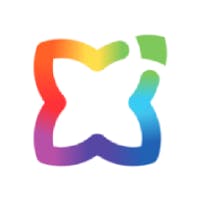See, I told you what would happenWhen that Big Wolf came around- F. Churchill, A. Ronel
There have been two archetypal villains of late, which have sent the world of traditional education into a spin. The first of these was the essay mill, where essays and even theses could be produced by contract writers for a fee, written in the style and tone appropriate to student and setting.
Stress balls were squeezed, bans were laid down and software was procured to catch the cheaters, but although some manufactured essays still slipped through the cracks, it was an acceptable margin. The straw house still stood.
Then, all of a sudden, comes the innocuous sounding ChatGPT; a tool which at present is open to everyone and anyone, has a very easy interface, and can generate the most incredible language outputs with the right prompts.
This time, the response was heightened. Many teachers, institutions and writers all started sounding apocalyptic warnings about the difficulties of detecting ChatGPT-produced work and the danger this posed to the status quo.
However, as the Guardian noted earlier this month, the alarmist reaction is already giving way to a more sober analysis of the two-fold opportunity ChatGPT and the use of AI in education present.
AI in education as catalyst and opportunity
Firstly, and to put our initial metaphor to bed, traditional education using standardised testing and essay-based assessments in an age of fluid socio-technological change, was always a straw house. If the big bad wolf of AI can blow it down with a huff and a puff, then we’d humbly suggest that the wolf isn’t really to blame.
Those of us in the Learnlife movement and beyond have been pushing for a more resilient and evidence-based approach for a long time, and already this single innovation has seen institutions start to remove essay based assessments for more skills-based or reflective practice approaches. Of course, others are banning it and creating new tools to “counter” it, but there is much to be positive about ChatGPT as a catalyst for change.
The second opportunity is where we get really excited, and that is the creative potential for AI in education to support deeper, richer, more personal learning. Artificial intelligence, you see, is nothing without Human Intelligence. Essay writing might grab the headlines, but ChatGPT is much more than just a draft writer; it is a personal researcher, a coding generator, a problem solver, a learning resource creator, another voice in the room, and a resource that we can all use to support lifelong and life-wide learning.
The tool can free up time from more rote or mechanistic tasks, like checking code for security issues. Learners can create and explore everything from poetry to php programs, analyse style and tone, plant fallacies for peers to identify, and so very much more.
Chat GPT can synthesise answers to questions in a way that is easier to internalise, as where Google presents lists of sources to interrogate, ChatGPT can aggregate information to produce a neat, structured and intelligible response. Google is worried, but really Chat GPT is just another layer in the myriad resources that can help a learner build skills and understanding.
The human limits of AI in education
In ChatGPT there is bias, there are inaccuracies, and it hasn’t been connected to the internet since 2021, but our learners need to know how to work with such challenges in a world where information should always be questioned anyway. It is flawed because we are flawed.
The articles we see decrying the bias and ethical failings of ChatGPT, only serve to reinforce our belief that too much is expected of AI, to the extent that we project expectations of human standards onto something which is inert. AI is not a force apart, but a product of our own labour, running on algorithms. If you are using this tool to offer mental health support to vulnerable users, then you’ve really misunderstood the boundary here.
AI in education is but a tool, which our learners can use to create, to learn, and to free up time to do profoundly human stuff. In the age of technology, we need to become more human than ever, and AI can help us to do that.
We asked Chat GPT to “write a haiku about a big bad wolf who changed education positively” and this is what we got:
Wolf once feared, now guideIgniting young minds with flameEducation blooms
Admit it: that’s not a bad haiku.
If you are interested in the topic of A.I. in education, check out the video below.
In this online workshop facilitated by Dr Stephen Harris FRSA, attendees explored the challenges and opportunities ChatGPT -OpenAI's newest Artificial Intelligence tool- represents for educators' daily practice, and its potential impact in learning systems worldwide.


